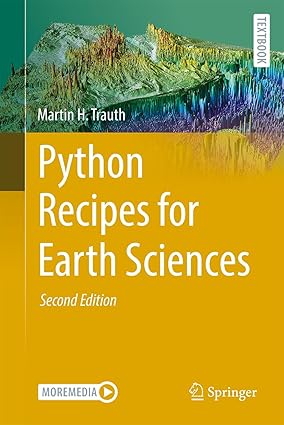
Python Recipes for Earth Sciences (Springer Textbooks in Earth Sciences, Geography and Environment)
Author: by Martin H. Trauth (Author)
Publisher finelybook 出版社: Springer
Edition 版次: Second Edition 2024
Publication Date 出版日期: 2024-10-08
Language 语言: English
Print Length 页数: 502 pages
ISBN-10: 3031569059
ISBN-13: 9783031569050
Book Description
Python is used in a wide range of geoscientific applications, such as in processing images for remote sensing, in generating and processing digital elevation models, and in analyzing time series. This book introduces methods of data analysis in the geosciences using Python that include basic statistics for univariate, bivariate, and multivariate data sets, time series analysis, and signal processing; the analysis of spatial and directional data; and image analysis. The text includes numerous examples that demonstrate how Python can be used on data sets from the earth sciences. Codes are available online through GitHub.
From the Back Cover
Python is used in a wide range of geoscientific applications, such as for image processing in remote sensing, for generating and processing digital elevation models, and for analyzing time series. This book introduces methods of data analysis in the earth sciences using Python, such as basic statistics for univariate, bivariate, and multivariate data sets, time series analysis, signal processing, spatial and directional data analysis, and image analysis. The text includes numerous examples demonstrating how Python can be used on data sets from the earth sciences. The supplementary electronic material (available online through Springer Link) contains recipes that include all the Python commands featured in the book and example data.
The Author:
Martin H. Trauth studied geophysics and geology at the University of Karlsruhe. He obtained a doctoral degree from the University of Kiel in 1995 and was subsequently appointed a permanent memberof the scientific staff at the University of Potsdam. He became a lecturer following his habilitation in 2003 and was granted a titular professorship at the University of Potsdam in 2011. Since 1990, he has worked on various aspects of past changes in the climates of eastern Africa and South America. Martin H. Trauth has taught a variety of courses on data analysis in the earth sciences with MATLAB for more than 30 years both at the University of Potsdam and at other universities around the world.








